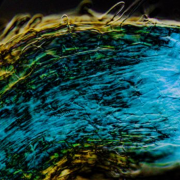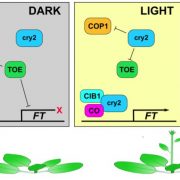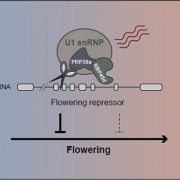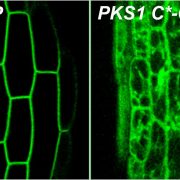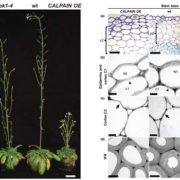Nuclear pore Y-complex and regulation of FLOWERING LOCUS C in Arabidopsis
Huang et al. explore the functions of the nuclear pore complex in regulating the expression of FLOWERING LOCUS C in plants.
Penghui Huang1,2†, Xiaomei Zhang2†, Zhiyuan Cheng3†
1 Research Institute of Intelligent Computing, Zhejiang Lab, Hangzhou 310012, China
2 MARA Key Laboratory of Soybean Biology (Beijing), State Key Laboratory of Crop Gene Resources and Breeding, Institute of Crop Sciences, Chinese Academy of Agricultural Sciences, Beijing 100081, China
3 CAS Key Laboratory of Soybean Molecular Design Breeding, Northeast Institute of Geography and Agroecology, Chinese Academy of Sciences, Changchun 130102, China
https://doi.org/10.1093/plcell/koad271
Background: The nuclear pore complex (NPC) has key functions in transport between the nucleus and the cytoplasm; the NPC is also involved in other nuclear functions, including organization of the nucleus/chromatin, gene expression, and DNA repair in animals and yeast. However, the mechanism by which the NPC functions in regulating gene expression is poorly understood in plants.
Question: How does the NPC regulate expression of the key regulator gene FLOWERING LOCUS C (FLC) and thus flowering, in Arabidopsis?
Findings: We discovered that the Y-complex self-maintained its nucleoporin homeostasis, allowing FLC transcription via changing histone modification patterns at this locus. We found that Y-complex nucleoporins were intimately associated with FLC chromatin through their interactions with histone-modifying enzymes at the nuclear membrane. Fluorescence in situ hybridization experiments showed that one of the Y-complex nucleoporins enhanced FLC chromatin positioning at the nuclear periphery. Moreover, Y-complex nucleoporins interacted with RNA polymerase II to increase the occupancy of RNA polymerase II at the FLC locus, facilitating gene transcription. Collectively, our findings identified an attractive mechanism by which the Y-complex regulates FLC gene expression via tethering the locus at the nuclear periphery and altering its histone modification patterns.

Next steps: Our previous findings showed that a nucleoporin from the Y complex participates in photoperiod regulation of flowering through controlling CONSTANS protein stability, therefore it will be interesting to uncover the mechanism by which the Y-complex participates in integrating different flowering pathways. It will also be interesting to elucidate the functions of other NPC sub-complexes in flowering regulation.
Reference:
Penghui Huang, Xiaomei Zhang, Zhiyuan Cheng, Xu Wang, Yuchen Miao, Guowen Huang, Yong-Fu Fu and Xianzhong Feng (2023). The nuclear pore Y-complex functions as a platform for transcriptional regulation of FLOWERING LOCUS C in Arabidopsis. https://doi.org/10.1093/plcell/koad271


